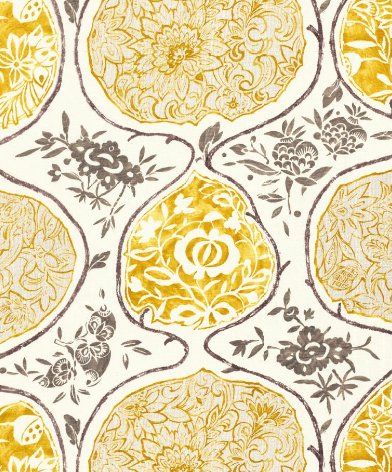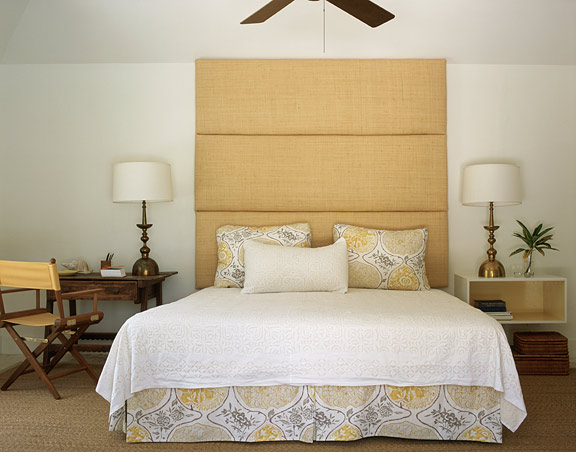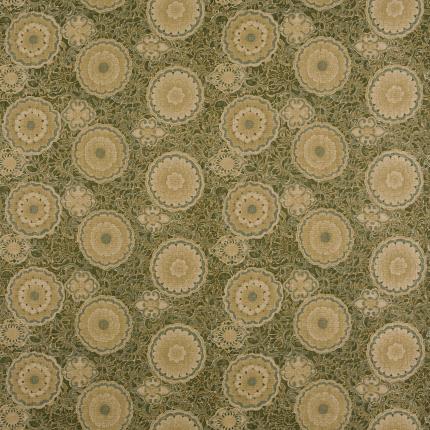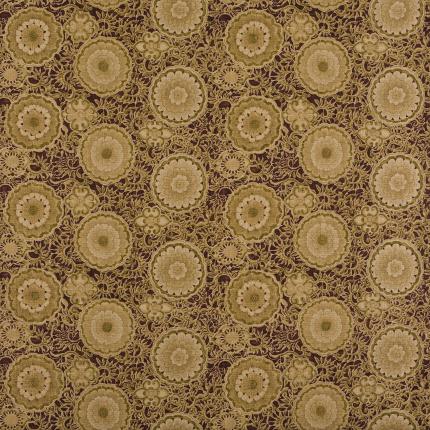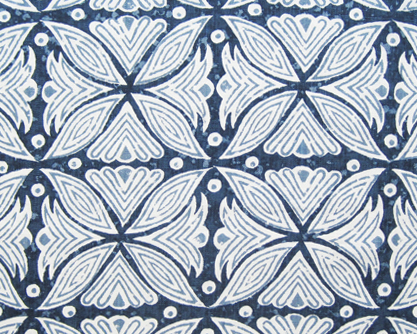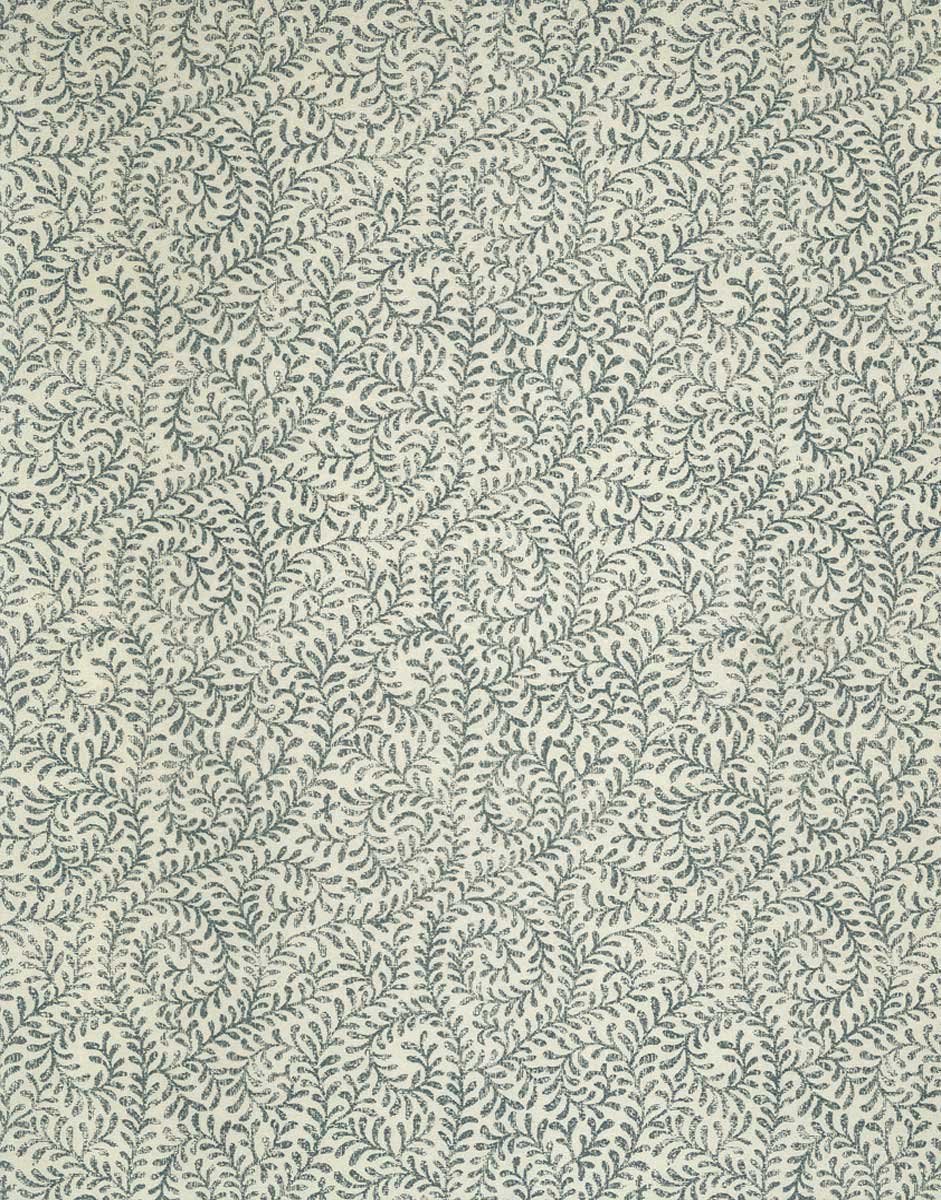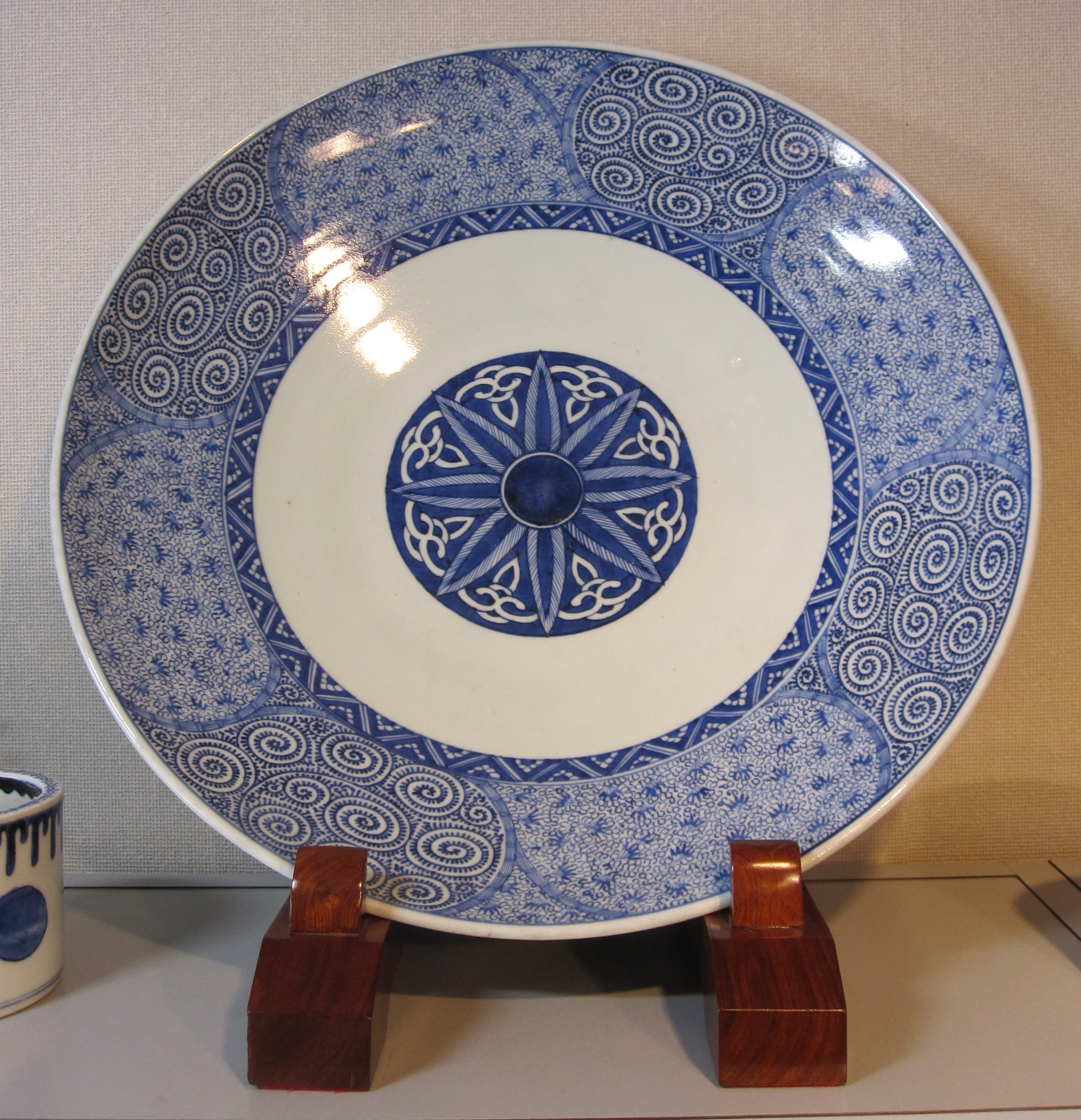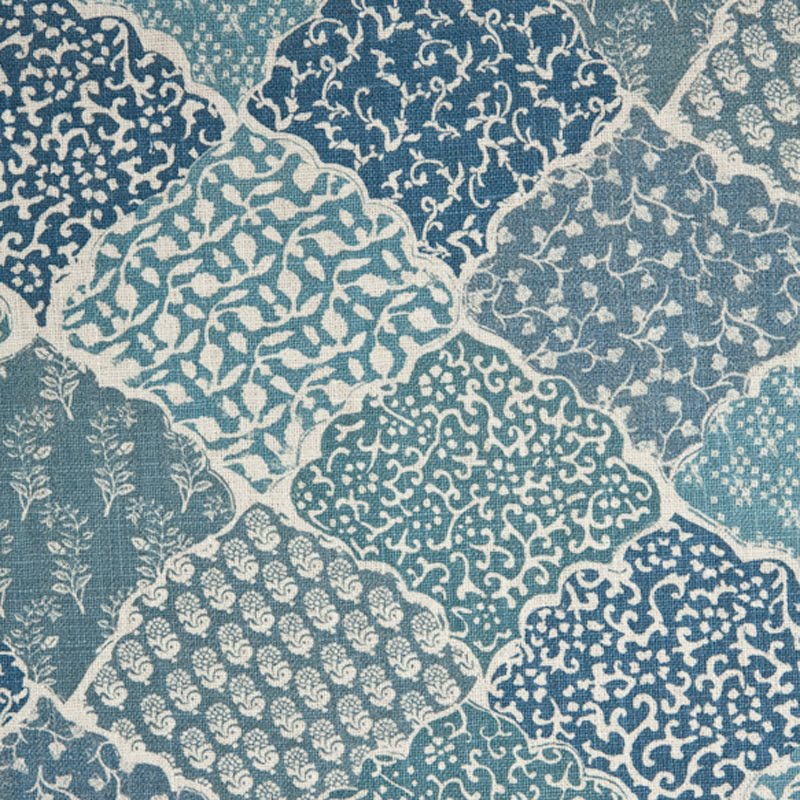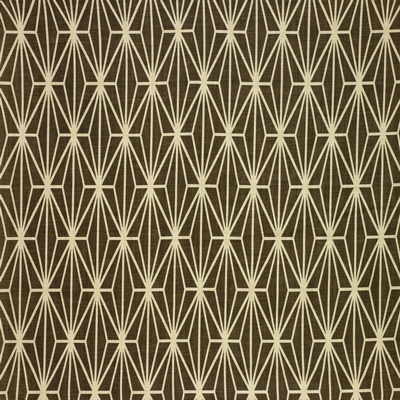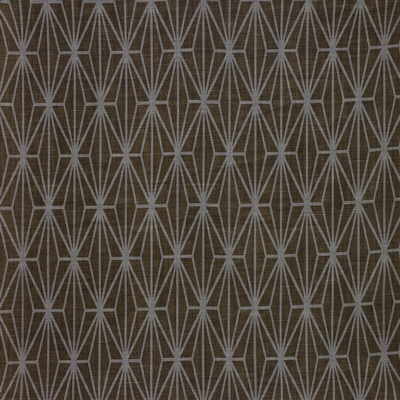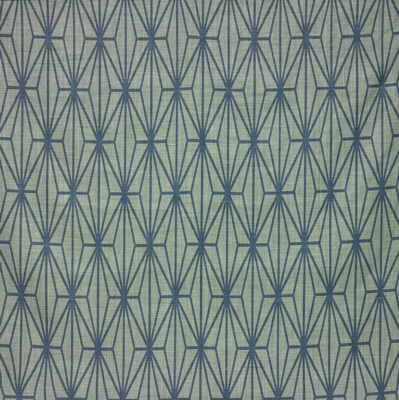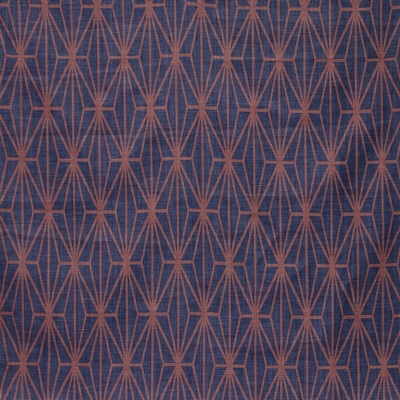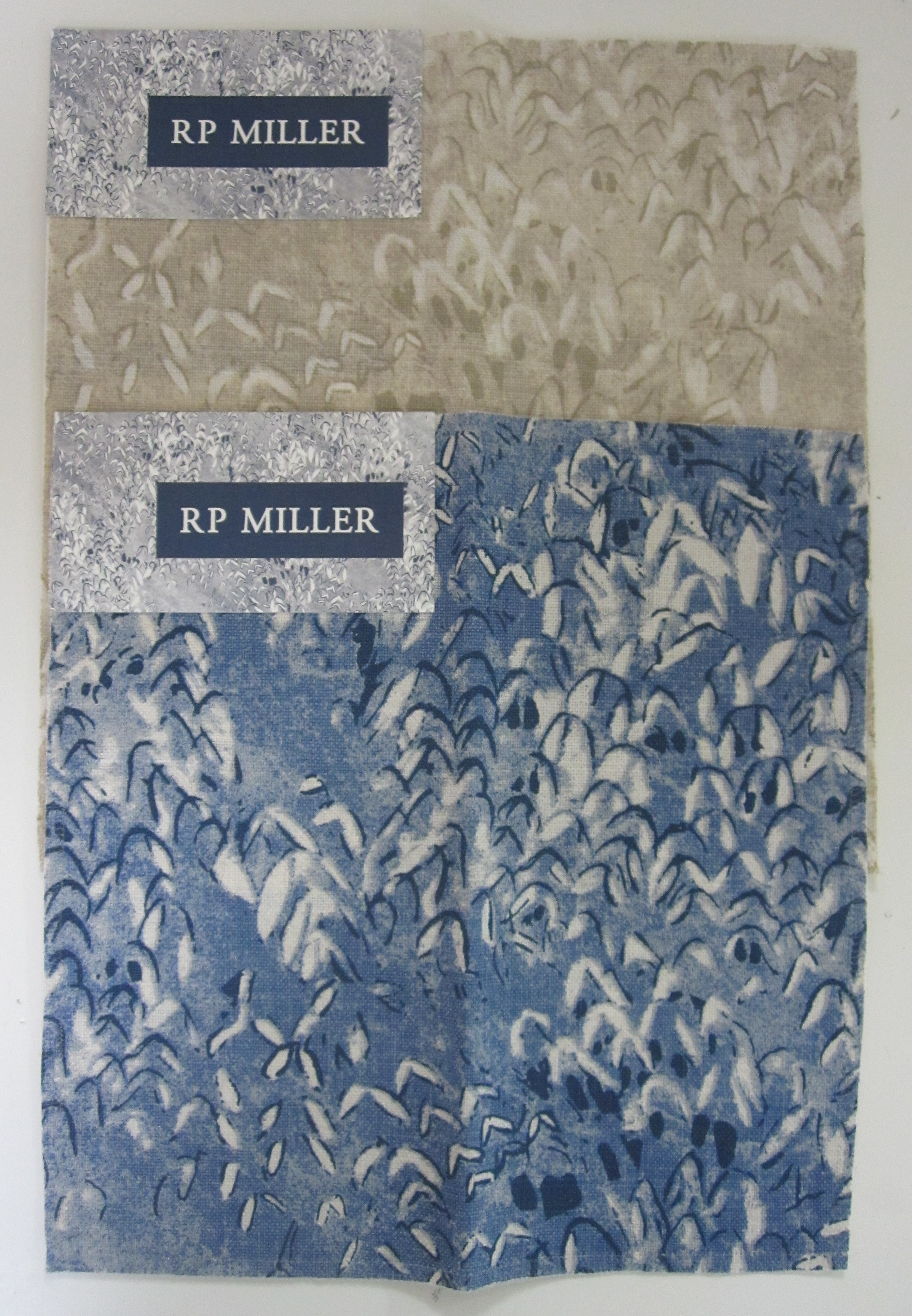For everyone else, I’ll start with the popular Schumacher linen and cotton blend Katsugi that she mentions, which comes in five colorways.
Don’t be deceived by these swatches. The surprise about Katsugi, and often many other fabrics viewed only in photos, is the scale. If you are imagining the circular patterns are about the size of an apple or the pomegranate they resemble, then you are incorrect. They are actually unexpectedly large. Designer Tom Scheerer has used this fabric to great effect in numerous projects.
Designer Suzanne Tucker makes a similar, although smaller in scale pattern called Kiku, which means chrysanthemum in Japanese. According to her website, the pattern is reinterpreted from a 19th century Japanese futon cover, with stylized chrysanthemum and lotus roundels and interlocking arabesques on a heavy linen ground.
By the way, there are 11 meters of it available in the sapphire blue on eBay right now for a fantastic price.
I don’t believe Martyn Lawrence-Bullard’s Kaba Kaba is based on Japanese textiles, but it looks like an elongated version of shippo tsunagi, also known as linked circles or seven treasures pattern. It also looks as if it was made with a traditional paste resist dye technique, even though it is not.
Compare it to this 19th century shibori (tie-dyed) yukata (cotton kimono).
For a sense of scale, you can see it on the pillow here, with two other great fabrics from his line.
As many of you know, I am a total Bennison junkie and have been using their floral linens in my beach house. While those patterns are their most famous, they also make a number of fabrics based on the karakusa (arabesque vine) pattern. Their “Kasumi” comes small, medium and large in numerous colorways. Unfortunately, none of the photos show the difference in scale, but it is dramatic, with the smallest size being a very fine subtle pattern and the extra-large size making a bold graphic statement.
The easiest way to show karakusa patterns is on Japanese porcelain, but it can be found in almost all the decorative arts.
For a quick and easy dose of karakusa-style fabric, one of my favorite home bedding brands, Pine Cone Hill, has a full line of products in their “Scramble” pattern, from duvets to dust ruffles to table napkins, all in a wide variety of colors.
Annie Selke has also issued Scramble as a fabric by the yard available at Calico Corners in five colorways. Here she has used it to upholster chairs in a Cape Cod dining room.
Lisa Fine’s Maharab, shown here in the indigo colorway, and on some cushions that actually look like old-fashioned Japanese futon, is not actually Japanese inspired.
But while the individual motifs are Indian inspired, the overall pattern reminds me of a typical style of Japanese fabric in which multiple stencils are used to make an overlapping collage like pattern. This fabric is a close-up from a mid-19th century futon cover, made with a rice paste resist method.
Asa no ha, or hemp pattern, is one of the most classic Japanese patterns there is. Ironically, for all that it is so ancient, it looks so modern. Here is it on an early 20th century yukata.
For a truly mod version of asa no ha, look no further that Kelly Wearstler’s fabric line for Groundworks in the Katana pattern, which takes the motif and stretches it to great dynamic effect.
Like some of the other fabrics in the post, the scale is surprisingly large.
Vanderhurd makes an amazing hand-embroidered linen in a hemp pattern called “Grande Etoile,” which comes in numerous colors, not all of which are pictured here, as well as a smaller version called “Petite Etoile.”
RP Miller’s new hemp pattern fabric has the unusual name of “1509 EB.” I imagine there must be a story behind that somewhere…
Thanks to the lovely Ariel at Hollywood at Home, I have gotten my hands on some samples from that new line, including a few I did not mention in the last post, such as the large chrysanthemum pattern Mrs. Burnside, the small star pattern Tanabata Night Sky and the delicate and leafy Weymouth place shown here in wheat ind indigo.
The wheat colors were a great surprise, very subtle and satisfying for those who like to work with neutrals.
Chiyo’s Pond, the pattern that looks like flowing water and petals reminds me of typical Okinawan bingata stenciled fabrics.
But my favorite is still the very unusual woodblock print inspired Le Witt Loom. In the wheat colorway if has a faux bois effect while in the indigo and white it is crisp and clean. I can’t think of anything else like it on the market.
For more photos and information on that pattern and the rest of RP Miller’s new line, see my previous post R. P. Miller…New Japanese Inspired Fabrics From Rodman Primack Debut at Hollywood at Home.
All of the photos of antique Japanese textiles came from what looks to be a fantatsic website called narablog, which features wonderful antique textiles, mainly Japanese, many for sale. I really recommend you take a look! Another fabulous resource for antique Japanese textiles is Sri Threads.
Photo credits for the three Tom Scheerer photos are: 1. Simon Upton, 2. William Waldron, 3. Eric Bowman. Annie Selke dining room from House Beautiful February 2009, photo credit: John Kernick. Kelly Wearstler image via decorpad.




